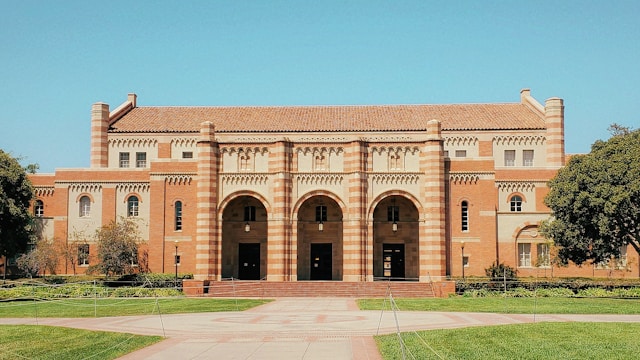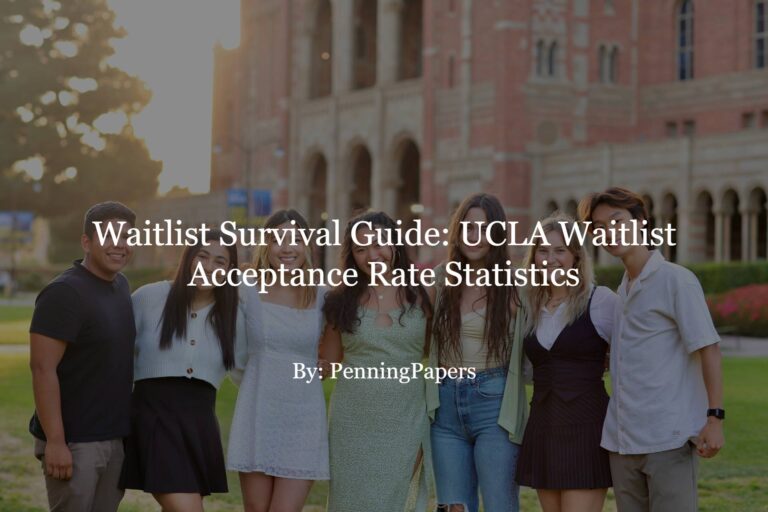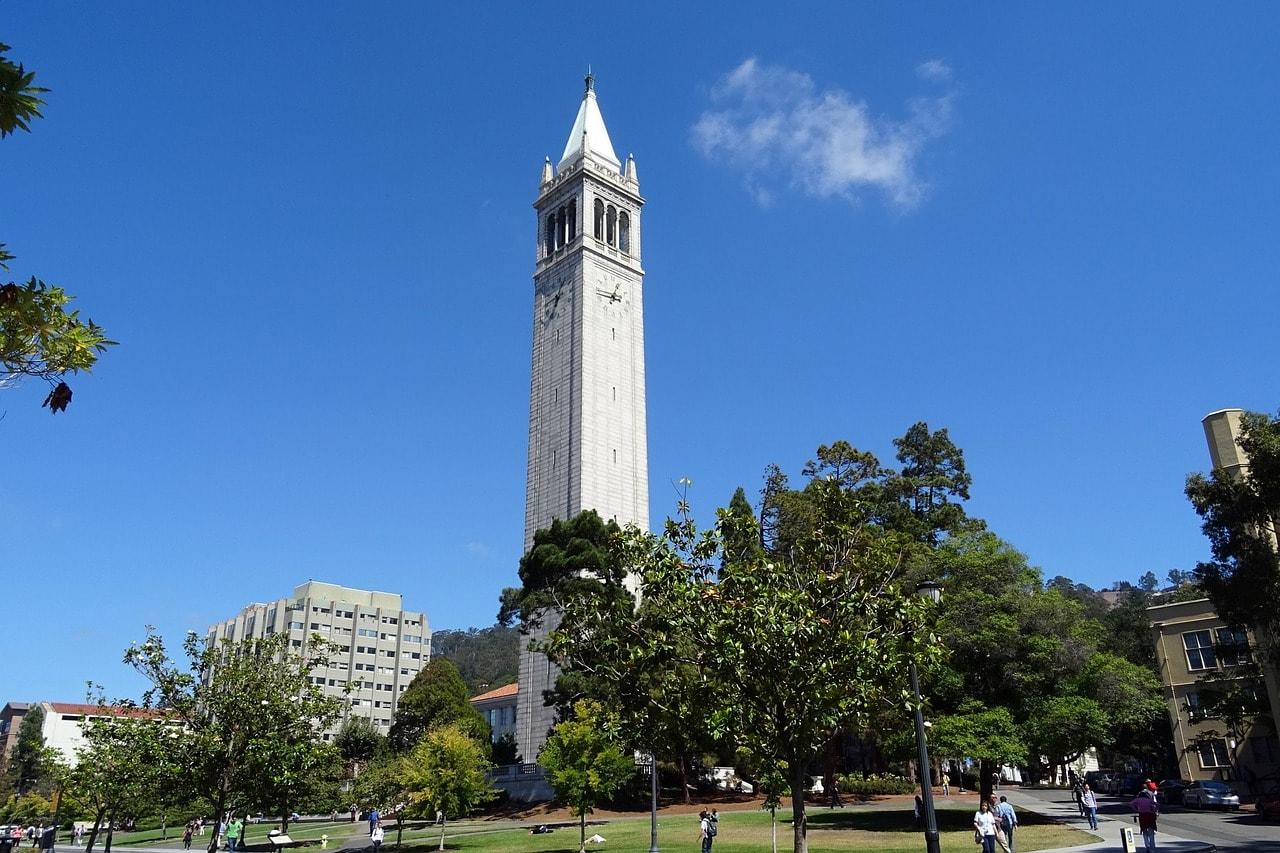If you want to know what your chances are of getting off of UCLA’s waitlist, we’ve got you covered. We scraped UCLA’s database and pasted the latest data below.
UCLA Waitlist Acceptance Rate Statistics

| Year | Admit Ratio | Admit Rate |
| 2020 | 1779 / 9254 | 19.22% |
| 2021 | 214 / 9897 | 2.16% |
| 2022 | 367 / 11,169 | 3.28% |
| 2023 | 1404 / 11725 | 11.97% |
Yeah… not exactly looking too good there.
Interestingly, their admit rate has what appears to be the stock pattern equivalent of a bearish flag. While UCLA’s waitlist acceptance rate increased dramatically in 2023, it still demonstrates a downward trend —hence our bearish and pessimistic outlook.
We can’t predict what the future of UCLA’s waitlist acceptance rate will look like. But, one thing is for certain: you can’t bet on it.
If you want to survive the waitlist process, it’s infinitely important to have a contingency plan.
So, below we’ll discuss a few pointers that will help you survive the UCLA waitlist process.
Professional College Application Help.
Contact us. We'll get to you within 24 hours.
What Are My Chances of Getting Accepted off of UCLA’s Waitlist if My Stats are Good?

Your chances aren’t great.
Now, the UCLA waitlist acceptance rate may be higher for students who have stronger stats and a more impressive profile. However, you should remember their overall acceptance rate. They went from double digits to single digits. Then, even when their acceptance rate increased in 2023, it never “fully recovered.”
Even if your stats are strong and your profile is impressive, you’re one of many waitlisted students.
And, what kinds of students do you think are impressive enough for UCLA to consider worthy of waitlisting?
That’s right!

The waitlist pool is already impressive enough for UCLA to see something worthy in them. They’re not reject-worthy enough for UCLA to make a decisive decision to throw their app out the window.
Thus, while having a strong application with good stats and extracurriculars may make you more viable than some other waitlisted students, it doesn’t mean your chances of acceptance are solid.
That’s why you need to stand out even if you have a strong profile. Good grades and ECs aren’t enough to survive the daunting UCLA waitlist acceptance rate.
One way you can stand out is via the waitlist letter (also known as the UCLA waitlist Option Form.)
UCLA’s waitlist letter grants you 7,000 characters to provide new and compelling information. This information should reshape how admissions officers see your original profile. If your grades or extracurriculars are impressive, consider using this as leverage to qualify and explain the new information
We also covered how to answer UCLA’s waitlist Option Form in our guide here.
What if My Stats are Bad?

Lower stats = lower chances.
So, you’ll need to explain the blemishes in your application on the UCLA waitlist letter. Reflect on why your application was rejected. What was weak about it? Then, explain those.
If you don’t know what was weak about your profile, you can ask us over a free consultation and we’ll screen your app for you. (as sometimes the reason for rejection is more nuanced than you may expect.)
Now, when explaining low grades in your UCLA waitlist letter, DON’T make excuses.
The waitlist letter is a reflection of your character. Making excuses leaves a bad taste in your readers’ mouth.
That doesn’t mean you can’t explain circumstances. You just need to show admissions officers that you’re taking responsibility for your deficiencies whilst showing them why you struggled.
Here’s an example.
Your GPA dropped from a 3.95 to a 3.5 from Sophomore year to Junior year. You take responsibility for your dip in performance. Then, you may say how your junior year was characterized by a temporary sense of brain fog, more AP classes, and a drifting mind.
These aren’t glowing topics that make you look good. But, they add genuine context and help admissions officers sympathize with your circumstances. Additionally, your honesty establishes trust, which is worth its weight in gold in a modern college admissions climate full of cheating and fake clubs.

Turning Weaknesses into Strengths
In fact, you can even use your weakness as a strength in your LOCI. It’s one of the best things to do to maximize your UCLA waitlist acceptance rate.
Let’s take the previous example.
You can tell admissions officers you noticed your focus waning throughout the end of sophomore year. Nonetheless, you took on more academic rigor to stimulate your mind. However, you realized only too late that your brain fog and lack of focus was a result of not learning how to manage a fast-paced mind. So, you learned in senior year how to establish a proper routine that makes your “brain happy” and get the gears working again.
Additionally, learning to adapt to an easily distracted mind requires lateral thinking to create structures that help you cope. Your temporary dip in performance therefore shows only the negatives. But, it doesn’t show the part where you’re learning to get accustomed to a distractible mind. It doesn’t show the moments you’re learning how to absorb information better and challenge yourself with harder classes despite the brain fog.
This is a fantastic answer. It demonstrates you’re someone willing to take on academic rigor despite challenges. The topic also exudes maturity, as it shows character traits like perseverance and adaptability. Ultimately, you want to use the blemishes in your previous application to highlight major personality and character traits that make you a strong candidate, whether that be adaptability, self-motivation despite challenges, intellectual curiosity, etc.
Why it’s NOT the End of the World

The UCLA waitlist acceptance rate is small. Sure. And, there’s no predicting whether you’ll get accepted or not. All you can do is write a killer LOCI and wait. But, it’s important to remember that you still have options.
It’s not the end of the world.
While your chances of acceptance as a freshman or transfer are slim, college is a very flexible experience. It’s the nature of higher education. You make the most of what you have to carve the next few years into a great and exciting career.
Sounds cliche, right?
Well, yeah. It kind of is. And, cliches are widespread for a reason.
When you’re so focused on getting accepted into one particular school, whether it be UCLA, an Ivy-League school, or any other, you’re often blind to the other creative ways you can leverage your existing opportunities.
Think of the selective attention test. When you’re focused on one thing (getting off UCLA’s waitlist) you won’t see all the other great opportunities in and out of college to help your career!
Now, this is where you may say, “but, UCLA has all the prestige and resources!”
Sure!
But, students who are often prestige-hungry will find that they’re missing a whole host of other great ways they can expand their career and social lives outside of prestige alone.
It’s an important aspect of the college apps process: using what you have to make the most of your education. And, students don’t do this nearly enough. If you can create an execute a plan that makes the most of worst-case scenarios, it WON’T be the end of the world.
Trust us!
Now, this gets us to the next point.
The Importance of a Contingency Plan.

A college contingency plan is a written plan containing alternative actions you’d take based on possible college acceptance outcomes.
Creating a contingency plan is a great way to “prepare for the worst.”
Considering UCLA’s meager acceptance rate, it’s a good idea to create a plan A, B, and C of paths you’d take if you were rejected from the waitlist.
There’s no point in trying to predict whether you’ll get accepted off the waitlist. No amount of crystal balls and tarot readings will help you predict the UCLA waitlist acceptance rate.
We often recommend students create a contingency plan with a professional college admissions consultant. Speaking with a professional about your plans in case you’re rejected can help orient you career and social life-wise. It’s a great way to establish order and structure during these stressful and uncertain times.
Plus, they can help you create a path that best suits your background, major, and talents! You’d be surprised how many of our own students find creating a contingency plan with our experts helped them see more optimal paths they never expected!
But, if you create a thorough plan and execute accordingly, you’ll be just fine! Trust us. And, trust the many students we’ve worked with who have gotten through this rut as well!
If you’re worried about the UCLA waitlist acceptance rate —especially your chances— don’t fret. Anxiety won’t save you. But, making an actionable plan will. Consider scheduling a free consultation with one of our expert college admissions consultants and advisors. We’ve helped both waitlisted and rejected students get accepted as transfers and grad students! And, we can help you achieve the same!

